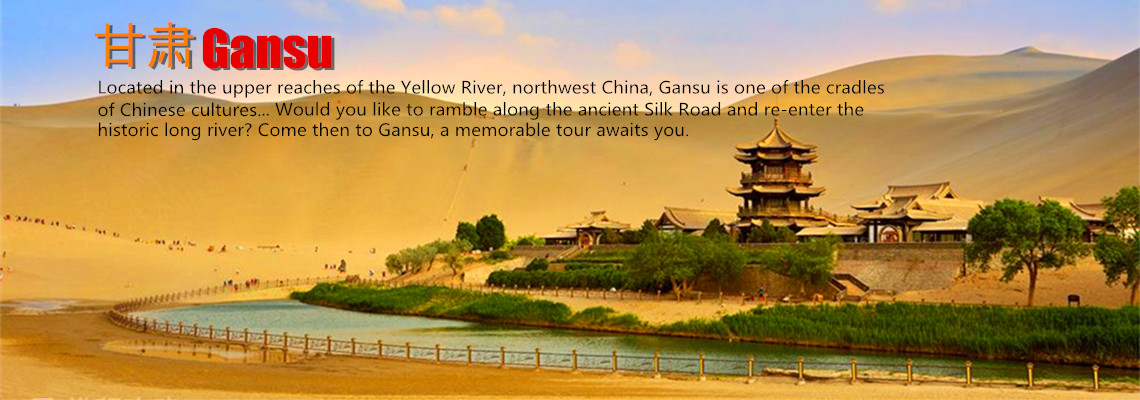
Matisi Scenic Area
What to see?
Four wonders in Matisi Temple are green mountains, clear water, precipitous peaks and fantastic grottos. Among the four, fantastic grottos attract plentiful visitors. The whole Matisi Temple can be divided in some parts: Qianfo Grottos, North and South Matisi Temple, Linsong Waterfall, King Gesar Palace, Guanyin Grottos etc. Most famous and hot attractions are as the follows.
Qianfo Grottos
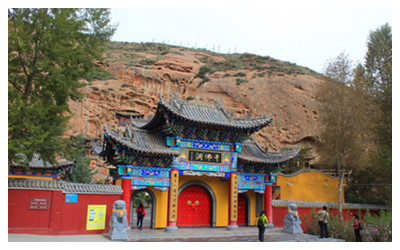 Qianfo Grottos was a Tibetan Buddhist Temple constructed in Yuan Dynasty and now is Chinese Tibetan Buddhist Temple. The Whole Qianfo Grottos can be divided into three parts: north section, middle section and south section.
Qianfo Grottos was a Tibetan Buddhist Temple constructed in Yuan Dynasty and now is Chinese Tibetan Buddhist Temple. The Whole Qianfo Grottos can be divided into three parts: north section, middle section and south section.
Pagoda Forrest is located in the north section. There are dozens of pagodas in different shapes densely scattered in the red palisades and form a holy forest. Although most of them were built in Yuan Dynasty and have been heavily stricken by long time and bad weather, these pagodas still remain their bright color and distinct lines. The carving techniques applied in these pagodas are rarely found in other grottos in China but share great a similarity with the Wuge Grottos in Cambodia, depicting that Tibetan Buddhism was propagated to China in long time ago.
The south and middle section are mainly built with many Buddhist Grottos. No. 6 Grotto namely Eastern Three Saint Palace is one hot grotto. It was carved in the prosperous Tang Dynasty, 5m long, 5.5m wide and 5.5m high. One Buddha statue with plump face and naturally proportionate shape sat in the center of the grotto. You can also see the statue of his two followers which have different expression and shape and suggest their different temper and age. Professors regard them as the Most Majestic Achievement of Tang Dynasty. Several palaces worshiped with Buddha and Bodhisattva also worth your visit.
North and South Matisi Temple
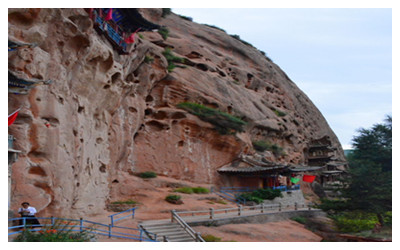 Matisi Temple includes North Matisi Temple and South Temple. In Matisi Temple, one attraction you must see is Thirty-three Heavens Grottos(additional 35 RMB needed) which a large quantity of tourists flocked into. Carved in origin Puguang Temple, Thirty-three Heavens Grottos has 7 floors and 21 grottos with exits to each other. With a shape of pagoda, this construction is rather infrequent and characteristic. In Buddhism, there are four towering peaks and each peak has one heaven and each heaven lived an immortal. With an addition of the central heaven, there are 33 heavens in total. All Buddhists believe that anyone who can reach to the thirty-third heave comes to a successful life. So everyone who comes to Matisi Temple will climb up to Thirty-three Heavens Grottos to have a spirit-washing experience. In the highest grotto stands the statue of Green Tara Bodhisattva, who is said to be turned by a drop of tear of the Avalokitesvara. In the left part of the highest grotto has a statue of White Tara Bodhisattva. It is referred to be the Songzi Guanyin by the locals. Those who want child will pray to her and their dream will be realized if White Tara Bodhisattva hear their pray.
Matisi Temple includes North Matisi Temple and South Temple. In Matisi Temple, one attraction you must see is Thirty-three Heavens Grottos(additional 35 RMB needed) which a large quantity of tourists flocked into. Carved in origin Puguang Temple, Thirty-three Heavens Grottos has 7 floors and 21 grottos with exits to each other. With a shape of pagoda, this construction is rather infrequent and characteristic. In Buddhism, there are four towering peaks and each peak has one heaven and each heaven lived an immortal. With an addition of the central heaven, there are 33 heavens in total. All Buddhists believe that anyone who can reach to the thirty-third heave comes to a successful life. So everyone who comes to Matisi Temple will climb up to Thirty-three Heavens Grottos to have a spirit-washing experience. In the highest grotto stands the statue of Green Tara Bodhisattva, who is said to be turned by a drop of tear of the Avalokitesvara. In the left part of the highest grotto has a statue of White Tara Bodhisattva. It is referred to be the Songzi Guanyin by the locals. Those who want child will pray to her and their dream will be realized if White Tara Bodhisattva hear their pray.
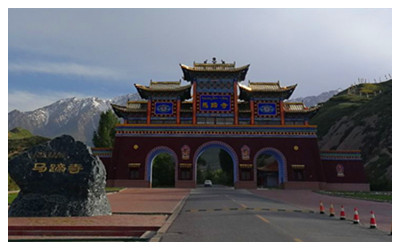 If Thirty-three Heavens Grottos is a dazzling pearl in Matisi Temple, Jinta Temple will be the essence of Matisi Temple without any doubt. Located in the southeast of the North Matisi Temple, Jinta Temple is hanging high in the cliff and 60 meters from the ground. In spite of only two grottos owned, it enjoys valuable best-preserved cultural sites and relics. There are more than 200 precious statues carved in Norther Liang, Northern Wei, Sui, Tang, Xixia Dynasties and so on. The large-scale Apsaras is the one of the Eight Accomplishments of Buddhism and reputed as the Essence of Eastern Aspsaras. With various postures and vivid expressions, these Aspsaras have strong feeling of third-dimension.
If Thirty-three Heavens Grottos is a dazzling pearl in Matisi Temple, Jinta Temple will be the essence of Matisi Temple without any doubt. Located in the southeast of the North Matisi Temple, Jinta Temple is hanging high in the cliff and 60 meters from the ground. In spite of only two grottos owned, it enjoys valuable best-preserved cultural sites and relics. There are more than 200 precious statues carved in Norther Liang, Northern Wei, Sui, Tang, Xixia Dynasties and so on. The large-scale Apsaras is the one of the Eight Accomplishments of Buddhism and reputed as the Essence of Eastern Aspsaras. With various postures and vivid expressions, these Aspsaras have strong feeling of third-dimension.
Mati Temple is one important grotto of North Matisi Temple, renowned for the large hoof print. There are three niches in the grotto but it’s a pity that no ancient statues exist here. In the left of central column is the hoof print. Legendary tells that when King Gesar passed Matisi Temple on his horse, his horse was interested by the beautiful scenery and wanted to have a stay here. But as one of the hoofs gets down, King Gesar awaked and pulled the lope. The horse flied away but his print left.
South Matisi Temple is also called Shengguo Temple and all the monks are Tibetan. There are several halls roofed with shining golden tiles. Large Buddhist activities are held here. A lot of people spare no pains to come here to pray or express the appreciation after fulfillment. The faithful believers are also streamed to pay homage. You can feel a solemn and respectfully atmosphere, full of sutras chanting and bell ringing.
Other Well-known Grottos
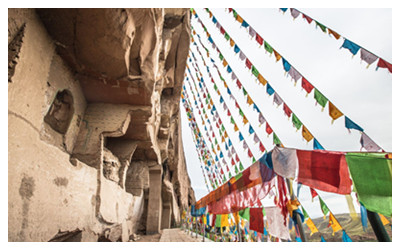 King Gesar Palace is the place where Gesar and his followers are worshiped. Gesar was a historic hero in Tibet and his story about defeating the devil spread every corner of the grasslands. The Grotto is over 70m long, 12m wide and 3m high and the statues of Gesar and his 36 generals are settled here. They all rode horses and held diverse weapons, ready for a just war. From this palace, you will read the ancient story of King Gesar.
King Gesar Palace is the place where Gesar and his followers are worshiped. Gesar was a historic hero in Tibet and his story about defeating the devil spread every corner of the grasslands. The Grotto is over 70m long, 12m wide and 3m high and the statues of Gesar and his 36 generals are settled here. They all rode horses and held diverse weapons, ready for a just war. From this palace, you will read the ancient story of King Gesar.
Guanyin Grottos, surrounded by thick bushes and trees, is made up of Upper Grotto, Central Grotto and Lower Grotto respectively where Buddhist Princesses and one follower. Three Grottos are located in three stone peaks. There is one stone column in each grotto, engraved with beautiful murals. The environment is very peaceful and you can release all your annoyance and unhappiness. One mural called “Four immortal Plays with Water” arouses tourists’ interest. Watch this great mural, as if you are walking into another world and have an inspirit communication with these immortals.
Travel Tips
Add: Douma Township, Minle County,65 km away from Zhangye City, Gansu Province
Opening Hours:08:00-17:00
Entranc Fee: CNY 120
Tel: 0936-8891610



 Ask Questions ?
Ask Questions ?